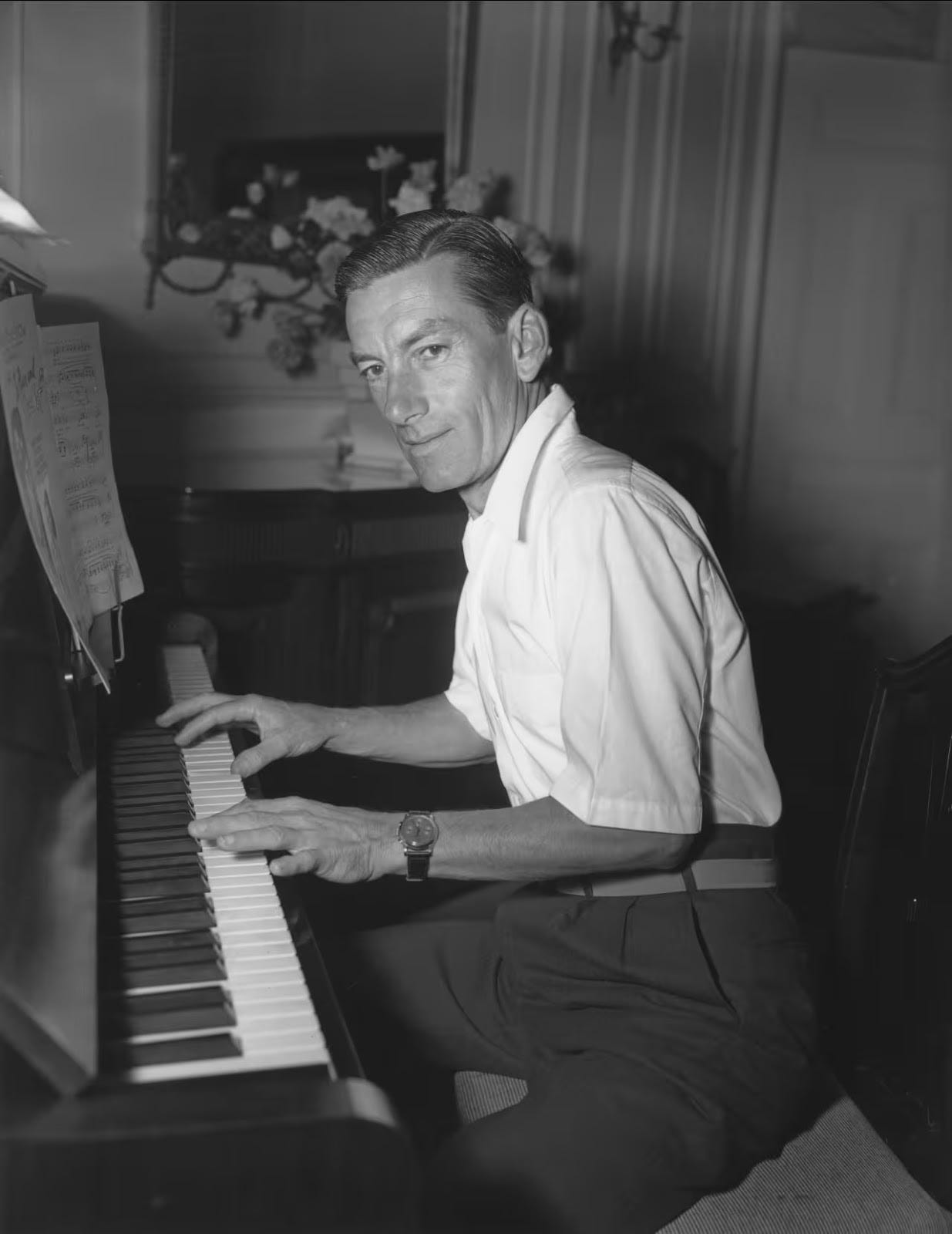Hoagy Carmichael at 125: A Stardust-Sprinkled Songsmith by John Edward Hasse
The composer and lyricist left a law career to create one of the most recognizable bodies of work in popular American music, incorporating jazz phrasing into sophisticated, warmly nostalgic melodies.
© Introduction Copyright ® Steven Cerra, copyright protected; all rights reserved.
November 22nd is the 125th anniversary of the birth of Hoagy Carmichael and I thought it would be fun to mark the occasion with a celebration in three parts beginning with this first tribute by By John Edward Hasse which appeared in the November 18, 2024, print edition of the Wall Street Journal as as 'A Stardust-Sprinkled Songsmith'.
© Copyright ® John Edward Hasse, copyright protected; all rights reserved, the author assumes no right of copyright usage.
“Imagine a law-school graduate who works on Wall Street but ends up becoming one of America’s most beloved songwriters. That’s the improbable journey of Hoagy Carmichael, the man behind such timeless songs as “Georgia on My Mind,” “Skylark” and “Star Dust.” With melodies that are instantly recognizable yet uniquely his, Carmichael’s music has woven itself into the fabric of American culture.
Born Hoagland Carmichael, on Nov. 22, 1899, in Bloomington, Ind., he grew up with the dawn of a new century and the rise of ragtime. Like Duke Ellington, born the same year in Washington, Carmichael reveled in the vibrant rhythms of the era. An early mentor, Reginald DuValle, an African-American pianist from Indianapolis, advised him to “never play anything that ain’t right. You may not make any money, but you’ll never get hostile with yourself.” Carmichael took those words to heart, pursuing a musical voice that was distinctively “right” in its authenticity.
He earned a law degree from Indiana University but was increasingly drawn to music. By his 20s, jazz had fully captured his imagination, and he began composing pieces, such as “Riverboat Shuffle,” that reflected this new American idiom. In 1929, he moved to New York, where he worked in a brokerage firm by day and mingled with jazz musicians by night, recording as singer or pianist with such talents as Louis Armstrong and Benny Goodman.
Carmichael’s foremost gift was melody, as “Star Dust,” “How Little We Know” and “The Nearness of You” attest. In jazz-influenced pieces like “Lazy River,” “Memphis in June” and “Baltimore Oriole,” he created themes that move through unexpected intervals, cover a wide vocal range, and reflect an instrumental influence. Even the movie song “Two Sleepy People” incorporates jazz phrasing. Many of his themes use few repeated notes, though “Rockin’ Chair” and “I Get Along Without You Very Well” are notable exceptions.
His two greatest pieces, “Star Dust” and “Skylark,” feature his most sophisticated lines. They sound as if Carmichael magically caught elegant improvisations of his friend and idol, cornetist Bix Beiderbecke, in midair and pasted them onto paper.
“Star Dust” has taken on an almost mythic status in American music. With its evocation of dreamy memories and images of climbing stars, the song’s wistful longing for lost love and its unforgettable melody have made it an American classic.
Though mainly known as a composer, Carmichael also wrote lyrics for dozens of his songs, penning the pastoral poetry of “Lazy River”:
Up a lazy river by the old mill run,
That lazy, lazy river in the noonday sun,
Linger in the shade of a kind old tree,
Throw away your troubles, dream a dream with me.
These lyrics reveal a recurring theme in Carmichael’s songs: an idealized picture of an American past, with a place to go home to.
Carmichael composed more than 600 songs. Some became popular standards. “Heart and Soul” even became part of American everyday life, seemingly sounded by every little kid with a piano and a pal to play the other part. His music wasn’t limited to the U.S.; it resonated with English-speaking audiences worldwide. The combination of catchy tunes and accessible song forms allowed his work to reach diverse listeners, from stockbrokers and small-town merchants to farmers and safari guides.
As a vocalist and pianist, Carmichael recorded nearly 400 tracks between 1925 and 1981. He was one of the first popular singer-songwriters, a minstrel of the mass-media age who had a significant performing career, rivaled in his generation perhaps only by Johnny Mercer, Carmichael’s best-matched lyricist. Together they wrote “Skylark” and “In the Cool, Cool, Cool of the Evening,” which earned an Academy Award in 1952 as best original song.
In the 1930s, Hollywood began attracting top songwriters like Mercer, Irving Berlin, Cole Porter, and the Gershwin brothers. Carmichael joined them in 1936, signing on as a staff songwriter at Paramount Pictures. He also appeared in 11 films, personating memorable roles in two World War II-era titles: kindly Uncle Butch in the heartfelt “The Best Years of Our Lives” and Cricket the piano player in “To Have and Have Not” starring, as I like to say, “Hoagy, Bogey and Bacall.”
As rock ’n’ roll surged in popularity in the mid-1950s, Carmichael found it increasingly difficult to publish and record new songs. Yet, his music endured in unexpected ways. Ray Charles’s 1960 rendition of “Georgia on My Mind” turned the song into an R&B anthem, earning Charles a Grammy and introducing Carmichael’s work to a new generation.
Hoagy Carmichael’s work goes beyond mere entertainment; his songs have become cultural touchstones. As we mark 125 years since his birth, his music remains a lasting piece of America’s artistic heritage, a blend of jazz, nostalgia, personality and melody that continues to resound and resonate through the decades.”
Mr. Hasse is curator emeritus of American music at the Smithsonian. He is the author-producer of the book-and-three-CD set “The Classic Hoagy Carmichael.”




